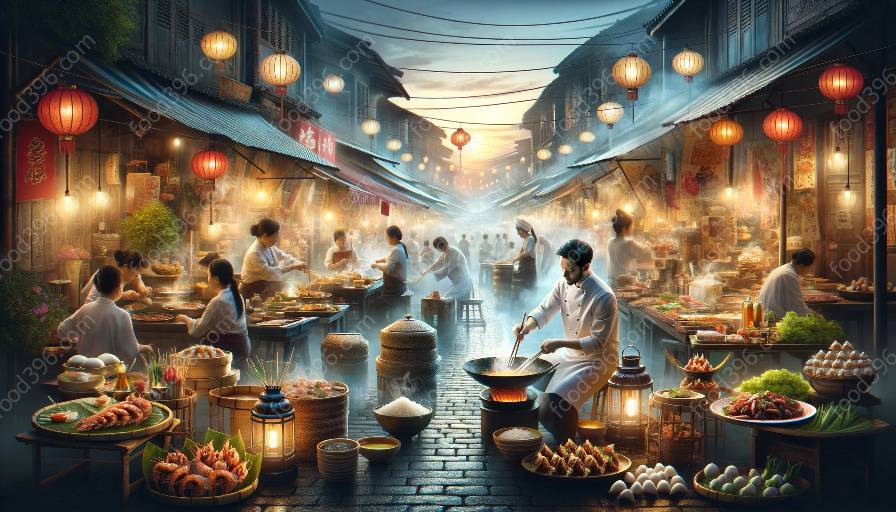Pakistani cuisine is a vibrant tapestry woven together by centuries of history, cultural influences, and regional variation. As a fusion of diverse culinary traditions, it reflects the country's rich and complex past. This article explores the evolution of Pakistani cuisine, tracing its roots, cultural influences, and traditional dishes.
The Early Origins
The history of Pakistani cuisine can be traced back to ancient times, encompassing a blend of indigenous flavors, as well as influences from various conquerors and travelers who passed through the region. The early inhabitants of the area, including the Indus Valley civilization, relied on a diet that primarily consisted of grains, dairy products, and an array of vegetables.
The extensive use of spices, which continues to be a defining feature of Pakistani cuisine, can be attributed to the region's historical position along the ancient trade routes that connected South Asia with the Middle East, Central Asia, and China. The exchange of goods and ideas along these trade routes introduced a wide array of spices and cooking techniques to the local culinary landscape. Additionally, the diversity of climate and geography within the region gave rise to a rich agricultural tradition, providing access to an abundant variety of fresh produce.
Cultural Influences
Over the course of history, Pakistan has been a melting pot of various cultures, each leaving its mark on the country's cuisine. The arrival of Muslim rulers and the subsequent Mughal Empire played a significant role in shaping the culinary traditions of the subcontinent. The Mughals, renowned for their sophisticated and lavish lifestyle, introduced intricate cooking techniques, rich gravies, and the iconic tandoor cooking method. Their culinary legacy can be seen in the form of delectable kebabs, aromatic biryanis, and indulgent curries that have become integral to Pakistani cuisine.
Furthermore, the influence of Persian, Turkish, and Afghan cuisines is evident in the diverse array of rice dishes, flavorful kebabs, and intricate breads that form an essential part of Pakistani gastronomy. The region's culinary repertoire also bears the imprint of British colonial rule, with the introduction of tea, biscuits, and certain cooking styles.
Regional Variation
Another distinctive aspect of Pakistani cuisine is the remarkable regional variation that reflects the diverse landscapes, climates, and cultural practices within the country. The cuisine of Punjab, for instance, is characterized by its hearty and robust flavors, with an emphasis on bread, dairy, and meat-based dishes. In contrast, the cuisine of Sindh embraces a seafood-centric approach, incorporating an array of flavors from the Arabian Sea. The province of Khyber Pakhtunkhwa, also known as the KPK region, boasts a rich tradition of aromatic and spicy dishes, often featuring robust meat preparations and tandoor-cooked breads.
The province of Balochistan, with its arid terrain and nomadic lifestyle, showcases a unique culinary style that revolves around grilled meats, hearty stews, and unleavened breads. In addition to these, the northern areas of Pakistan, including Gilgit-Baltistan and Azad Jammu and Kashmir, offer a fascinating array of traditional dishes with influences from Central Asian and Tibetan cuisines, reflecting the region's mountainous terrain and Buddhist heritage.
Traditional Ingredients
Central to the allure of Pakistani cuisine are the traditional ingredients that lend a distinct identity to its dishes. The extensive use of aromatic spices, such as cumin, coriander, turmeric, and garam masala, infuse the cuisine with its characteristic depth of flavor. Moreover, the liberal application of fresh herbs, including mint, cilantro, and curry leaves, imparts a refreshing and fragrant dimension to Pakistani dishes.
The cuisine also heavily relies on staples such as wheat, rice, and lentils, which form the foundation of countless savory and wholesome preparations. Dairy products, especially yogurt and ghee (clarified butter), are integral to the cooking traditions of the region, enriching dishes with their creamy texture and distinctive taste.
A Modern Perspective
As Pakistan continues to evolve and embrace globalization, its culinary landscape has also witnessed a fusion of traditional and contemporary influences. Urbanization and exposure to international cuisines have led to the emergence of modern Pakistani gastronomy, featuring innovative interpretations of classic dishes and the incorporation of global ingredients and cooking techniques.
Beyond its borders, Pakistani cuisine has gained recognition and appreciation on the global stage, captivating palates with its rich flavors and diverse offerings. From the tantalizing street food to the elaborate feasts, the journey of Pakistani cuisine is a testament to the enduring legacy of history, culture, and culinary creativity.

